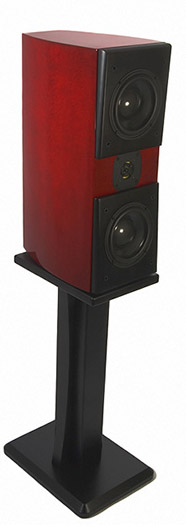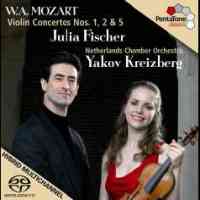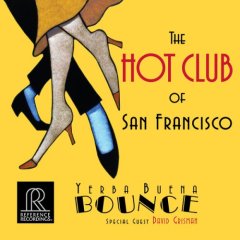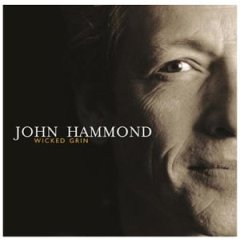Acoustic Zen Technologies Adagio Jr. Loudspeaker
| Acoustic Zen Technologies Adagio Jr. Loudspeaker |
|
|
|
July 2007 |
 AT BLACKWATER POND
AT BLACKWATER POND
By Mary Oliver
At Blackwater Pond the tossed waters have
settled
after a night of rain.
I dip my cupped hands. I drink
a long time. It tastes
like stone, leaves, fire. It falls cold
into my body, waking the bones. I hear them
deep inside me, whispering
oh what is that beautiful thing
that just happened?
On the day that I received the Adagio Jr.’s (the newest loudspeaker creation from Acoustic Zen’s maestro, Robert Lee), I had just returned from hearing trombonist Steve Turre at Scullers Jazz Club here in Cambridge, Massachusetts. Turre announced at the start of his show that, “I still like to swing!” and swing he did, accompanied by his talented quartet as he led the charge. Turre concluded the eclectic evening of blues and ballads with the title track from his excellent new recording, Keep Searching [High Note Records 7159]. On this cut, Turre turns to blowing a collection of sea shells that are lined up on a table in front of him. Turre played with Rahsaan Roland Kirk in his youth and credits Kirk with encouraging him to bring the ancient art of shell blowing into his repertoire. Turre’s shell collection includes triton shells and conch shells, varying from a tiny shell (with a practical register of only a fifth) to a huge conch, originating from the Great Barrier Reef of Australia. Turre takes each shell in turn, clasping them in a different position and moving his hands in and out of their curved interiors to gain different pitches and sounds. He also runs his hands over these shells for percussive effects. The end result is a beautiful combination of majesty and grace created by Turre’s piercing short blasts or long, languid sustains on these shell instruments.
Clarity of Form
Appropriately shell shocked (pun intended) from hearing Turre’s performance at Scullers, I headed home to see how the Adagio Jr.’s would handle a recording of Turre’s unique shell blowing and how close it compared to hearing him perform live. While I was waiting for the Adagio Jr.’s to break in (like most loudspeakers, they need at least 100 hours to show their true form), I pondered their design and workmanship. The Adagio Jr.’s are a two-way, rear-ported, stand-mounted speaker. They share all of the vital design elements of their larger sibling, the floor standing Adagio, which was so well liked by many Stereo Times writers, including Craig Fitzpatrick who wrote a glowing review in these pages back in August of last year.
The Adagio Jr.’s are designed around two 6 ½” woofers (composed of a ceramic coated fabric cone) and a 2 ½” under-hung (short voice coil/long magnetic gap) voice coil linear motor system, shielded with a 7 oz. Neodymium magnet. Just as with the larger Adagio, sandwiched between the woofers is a 1 5/8” round ribbon tweeter, shielded in a high temperature resistant magnet structure. The Adagio Jr. is rated at a sensitivity of 89 dB and utilizes the same Linkwitz/Riley crossovers found in the Adagio. I refer readers to Craig’s thorough review of the Adagios for a discussion of the design and technology inherent in both of these loudspeakers, including Robert Lee’s unique use of the under-hung, short voice coil linear system.
My pair of Adagio Jr.’s ($3,500) arrived in two well constructed boxes; one containing the speakers and the other containing the artful and easy to assemble stands for the speakers ($300). Robert Lee had warned me that there would be a delay in shipment until the finish of these newest speakers was done to his liking, and the Adagio Jr. pair that I received (in piano black finish) was gleaming and very attractive. I did notice a slight roughing of the finish near the back port, but nothing that would detract from its overall fine crafted appearance. Each Adagio Jr. weighs in at 38 lbs, easy to maneuver and place in a small to medium sized room. I found they sounded best slightly toed in and just a few feet from side and back walls. This made for a nice intimate listening experience, with a triangle formed about six feet away from my listening position in my small office space (14’x 9’). I also auditioned the Adagio Jr.’s in a medium sized room (20’ x 16’) and found they could still nicely fill this space, with the added bonus of more precision (particularly in the bass region) when able to breathe more from side and back walls. Using Stillpoints Universal Resonance Dampers to isolate the speakers from their stands was beneficial in gaining even more dynamic precision and clarity to their overall presentation. A final note on accompanying electronics: the Adagio Jr.’s relished power. Companioned with the wonderful solid state integrated amplifier, the model 15.2 (2 x 180 watts RMS 8 Ohms) from the French company, Mimetism, the Adagio Jr.’s strutted their sonic virtues beautifully. The Mimetism 15.2 is a dynamic, suave integrated amplifier, combining excellent dynamic presence, continuousness and a tonal balance that really invites the listener in. William Andrea, the talent behind such classic designs as the Vecteur L 4.2 CD player is the designer of the 15.2 and I think he is on to something special with this integrated amp, fully controlled by digital functions. I plan a review of the 15.2 shortly, if I can pull myself away from its aura long enough.
I should also note that at the conclusion of my audition period with the Adagio Jr.’s, a tweeter unit on one of the speakers began to malfunction and eventually closed down entirely. This gave me the opportunity to test the customer service at Acoustic Zen. A telephone call to Acoustic Zen put me in touch with Robert Lee and his accommodating staff. I was offered a replacement speaker to be shipped immediately, or the option of Robert walking me through a quick diagnosis and possible repair over the phone. Upon the speaker’s return, Robert reported that a minor soldering repair was all that was needed and surmised that some damage in shipping had originally occurred which eventually had caused a part of the tweeter unit to disengage slightly in this one speaker. Whatever the cause may have been, it was good to know that Acoustic Zen has excellent customer service and clearly stands behind the workmanship of their products.
Clarity of Vision
Placing the Adagio Jr.’s into my small office system, I heard its most distinctive feature in the context of that majestic sound of Turre’s blown seashells: clarity, coherency and an uncolored litheness of presentation. The image of crystal clear water running through ones hands (as Mary Oliver so beautifully portrays in her poem, At Blackwater Pond) best describes the sonic presentation of this speaker. The tone of Turre’s shell blowing from Keep Searching was ever so light and quick, revealing all of the inner details of his breath and the micro dynamics of this unique horn’s sound. There was a lack of coloration, a transparency and a liquid feel to the flowing sounds. Placing my reference Harbeth Super HL5’s into the system produced the best comparison to the Adagio Jr.’s on this simple example of Turre’s shell blowing. In contrast to the Adagio Jr.’s, the Harbeth produced a slightly slower, less transient quick presentation, with less of a see through quality. The Harbeth presented a warmer picture, a more rotund and more substantial image, a little less focused and quick, but with more resonance and after-glow to the long, majestic calls of the conch shell.
The Adagio Jr.’s exquisite way with clarity, continuousness and coherence was highlighted in listening to all kinds of acoustic string music, from the verve and quickness of young Julia Fisher’s violin to Michael Hedges’ fluid acoustic guitar. It brought a sense of lightness, quickness and uncolored dynamic joy to these acoustic recordings.  For example, when Julia Fisher takes flight on any of her virtuoso solos in Mozart’s early Violin Concertos recorded with Yakov Kreizberg and the Netherlands Chamber Orchestra(Pentatone SACD 5186094), the music was captured by the Adagio Jr.’s with great sparkle and sweetness up top, capturing a lot of the air surrounding the soloist that this Pentatone recording offers. Soundstage was not as wide or deep as I remember hearing with the larger Adagios, but it was still very satisfying in both depth and width in my small listening room. In a larger room, the soundstage increased even further in depth and width, with surprising fullness and realism. Importantly, I felt that the Adagio Jr.’s produced an even more coherent picture from top to bottom than most monitor designs I have heard, in addition to their larger sibling, the Adagios. No one frequency dominated the beautifully continuous presentation of Fisher exchanging Mozart’s playful melodies with the larger orchestra. Fischer’s timbres were natural and lacked any glare up top. In comparison to the Harbeth Super HL5, the Adagio Jr. clearly went for a sonic signature of quickness, clarity and emphasis on technique and string, while the Harbeth provided more of a sense of the body of Fischer’s instrument and those of the orchestra, with a bit more tonal coloration and weight all around. With its stunning coherence and liquid clarity, the Adagio Jr. seemed to raise another curtain between listener and musical event, so that instrumental timbres and dynamics were able to be explored more fully.
For example, when Julia Fisher takes flight on any of her virtuoso solos in Mozart’s early Violin Concertos recorded with Yakov Kreizberg and the Netherlands Chamber Orchestra(Pentatone SACD 5186094), the music was captured by the Adagio Jr.’s with great sparkle and sweetness up top, capturing a lot of the air surrounding the soloist that this Pentatone recording offers. Soundstage was not as wide or deep as I remember hearing with the larger Adagios, but it was still very satisfying in both depth and width in my small listening room. In a larger room, the soundstage increased even further in depth and width, with surprising fullness and realism. Importantly, I felt that the Adagio Jr.’s produced an even more coherent picture from top to bottom than most monitor designs I have heard, in addition to their larger sibling, the Adagios. No one frequency dominated the beautifully continuous presentation of Fisher exchanging Mozart’s playful melodies with the larger orchestra. Fischer’s timbres were natural and lacked any glare up top. In comparison to the Harbeth Super HL5, the Adagio Jr. clearly went for a sonic signature of quickness, clarity and emphasis on technique and string, while the Harbeth provided more of a sense of the body of Fischer’s instrument and those of the orchestra, with a bit more tonal coloration and weight all around. With its stunning coherence and liquid clarity, the Adagio Jr. seemed to raise another curtain between listener and musical event, so that instrumental timbres and dynamics were able to be explored more fully.
However, string sections playing behind Fischer sounded a bit leaner in number and individual substance with the Adagio Jr. as compared to the more rotund and full Harbeth presentation. This same contrast in presentations was heard on other well recorded concertos, like the dramatic Carl Maria Von Weber’s Clarinet Concerto, performed by clarinetist Thea King with the London Symphony Orchestra [Hyperion 66088]. The Adagio Jr.’s highlighted the crispness of King’s virtuoso solos, the quick, taut lines of the strings behind her and delivering the great dynamic swings of this lyrical piece. In contrast, the Harbeth wanted me to hear more of the substance and weight of King’s instrument, less fragility and more woody, breathy character. With the Harbeth, the strings behind the soloist were more completely drawn out, their wooden bodies more substantial, textured and a bit more natural in heft and numbers than with the Adagio Jr. This comparison highlighted what I heard as Acoustic Zen’s sonic priorities in offering the Adagio line with its unique under hung short voice coil design: hitting the mark on clarity, seamlessness and uncolored transparency throughout the musical spectrum and offering a clear, liquid lens into the musical action.
 If you like the swinging snap, crackle and pop of old time swing, grab a copy of Reference Recording’s newest recording of The Hot Club of San Francisco, in their Yerba Buena Bounce[Reference Recordings 109] and put on the closing number, “Jam: Some of These Days.” With the Adagio Jr.’s leading the way, the whole fabric of this rollicking number came to life, with its jaunty, quick acoustic guitars, sweet violin lines and the vocals of Paul Mehling clear and deep. The clarinet of Bill Carter slid melodically while Clint Baker’s trombone was smooth and pure. Again, I was struck with the lack of coloration or distortion with the Adagio Jr.’s, the liquidity and free flowing transparency that they brought to this funfest. On the other side of the emotional spectrum was the deep, brooding blues of “Blue Prelude,” starkly performed by Patricia Barber and bassist Michael Arnopol on their beautifully recorded disc, Live A Fortnight In France [Blue Note 7243]. The Adagio Jr.’s literally strutted their best stuff on this number: beautiful continuousness from top to bottom, from Barber’s high held vocal to her plunging piano chords, and a smooth, pungent delivery of Arnopol’s dynamic bass lines. Even at low volume, plucks and rolls were distinct, piano chords sharp and without any glassy overlay and micro dynamics were able to be newly mined through the Adagio Jr.’s clear, liquid lens.
If you like the swinging snap, crackle and pop of old time swing, grab a copy of Reference Recording’s newest recording of The Hot Club of San Francisco, in their Yerba Buena Bounce[Reference Recordings 109] and put on the closing number, “Jam: Some of These Days.” With the Adagio Jr.’s leading the way, the whole fabric of this rollicking number came to life, with its jaunty, quick acoustic guitars, sweet violin lines and the vocals of Paul Mehling clear and deep. The clarinet of Bill Carter slid melodically while Clint Baker’s trombone was smooth and pure. Again, I was struck with the lack of coloration or distortion with the Adagio Jr.’s, the liquidity and free flowing transparency that they brought to this funfest. On the other side of the emotional spectrum was the deep, brooding blues of “Blue Prelude,” starkly performed by Patricia Barber and bassist Michael Arnopol on their beautifully recorded disc, Live A Fortnight In France [Blue Note 7243]. The Adagio Jr.’s literally strutted their best stuff on this number: beautiful continuousness from top to bottom, from Barber’s high held vocal to her plunging piano chords, and a smooth, pungent delivery of Arnopol’s dynamic bass lines. Even at low volume, plucks and rolls were distinct, piano chords sharp and without any glassy overlay and micro dynamics were able to be newly mined through the Adagio Jr.’s clear, liquid lens.
 Going from Barber’s intimate duet blues to those big, bad Blues machines like that provided by John Hammond on his scorching disc,Wicked Grin [Pointblank Records7243], the Adagio Jr.’s kept the pace quick and agile, separating musicians on the stage with a clarity that was exceptional. On Hammond’s “Heart attack and Vine” the big roars of Stephen Hodges’ drums and Larry Taylor’s bass can at times muddy the gritty vocals of Hammond. Not here though, as the Adagio Jr.’s kept everything separated, with no dominant frequency pushing either Hammond’s vocals or Tom Wait’s snarling guitar to the far corner. The bass of the Adagio Jr.’s was surprisingly deep for its size, just as Craig had marveled in his review of the larger Adagios. I did hear a touch of uncontrolled bass bloom and boom on some other rock recordings with the Adagio Jr.’s in my small listening space. Some of this certainly could have been created from the room itself. Such uncontrolled bass boom was less apparent in my medium sized room where the speakers had more room to breath from their surrounding walls. Apart from these distractions, the mixture of very satisfying bass, combined with the Adagio Jr.’s special way with continuousness from top to bottom, opened up a clear window to observe the interplay between bass players and their ensembles. For example, don’t miss the new recording from bassist Brian Bromberg, entitled Downright, Upright [Artistry Music 7012]. “Cantaloupe Island” opens this eclectic recording with lots of tropical fanfare and quick melodic lines exchanged between Bromberg and his rocking ensemble. The Adagio Jr.’s propelled this music forward, pinpointing all players on the stage and offering their clear vision of a quick, agile feel to the proceedings. Everything from Bromberg’s gripping, taut bass to rapid piano runs and sax clouts was heard with precision, clarity and a flowing lightness and liquidity that was compelling. Once again, a comparison with my reference Harbeth Super HL5 revealed the Adagio’s virtues with precision, clarity and quickness, as the Harbeth presented a weightier, warmer tonal palette to this piece with a bit more harmonic substance and richness.
Going from Barber’s intimate duet blues to those big, bad Blues machines like that provided by John Hammond on his scorching disc,Wicked Grin [Pointblank Records7243], the Adagio Jr.’s kept the pace quick and agile, separating musicians on the stage with a clarity that was exceptional. On Hammond’s “Heart attack and Vine” the big roars of Stephen Hodges’ drums and Larry Taylor’s bass can at times muddy the gritty vocals of Hammond. Not here though, as the Adagio Jr.’s kept everything separated, with no dominant frequency pushing either Hammond’s vocals or Tom Wait’s snarling guitar to the far corner. The bass of the Adagio Jr.’s was surprisingly deep for its size, just as Craig had marveled in his review of the larger Adagios. I did hear a touch of uncontrolled bass bloom and boom on some other rock recordings with the Adagio Jr.’s in my small listening space. Some of this certainly could have been created from the room itself. Such uncontrolled bass boom was less apparent in my medium sized room where the speakers had more room to breath from their surrounding walls. Apart from these distractions, the mixture of very satisfying bass, combined with the Adagio Jr.’s special way with continuousness from top to bottom, opened up a clear window to observe the interplay between bass players and their ensembles. For example, don’t miss the new recording from bassist Brian Bromberg, entitled Downright, Upright [Artistry Music 7012]. “Cantaloupe Island” opens this eclectic recording with lots of tropical fanfare and quick melodic lines exchanged between Bromberg and his rocking ensemble. The Adagio Jr.’s propelled this music forward, pinpointing all players on the stage and offering their clear vision of a quick, agile feel to the proceedings. Everything from Bromberg’s gripping, taut bass to rapid piano runs and sax clouts was heard with precision, clarity and a flowing lightness and liquidity that was compelling. Once again, a comparison with my reference Harbeth Super HL5 revealed the Adagio’s virtues with precision, clarity and quickness, as the Harbeth presented a weightier, warmer tonal palette to this piece with a bit more harmonic substance and richness.
Beachcombing Home
How to describe the sound and feel of cool, running water through one’s hands or the breath of Steve Turre as he blows his piercing sea shell calls? I recommend the poetry of Mary Oliver to you, and the Adagio Jr. loudspeaker as conduits to these sensory, musical pleasures. The Adagio Jr.’s are great choices to audition in small and medium sized rooms, and offer wonderful virtues in terms of their uncolored transparency and liquid, litheness of vision from top to bottom that are contagious. As Mary Oliver exclaims, “Oh, what is that beautiful thing that just happened?!”

________________
Acoustic Zen Adagio Jr. Specifications:
Type: two-way rear-ported stand mounted
Woofer: 2 pieces; 6 1/2” composed of ceramic coated fabric cone; 2 ½” under hung voice coil linear motor system, shielded 7 oz. Neodymium magnet
Tweeter: 1 5/8” Round Ribbon
Frequency Response: 35Hz-25kHz + 3dB
Sensitivity:89 dB/1Watt/1meter
Impedance: nominal 6 Ohms
Recommended power: 50-200 Watts per channel
Crossover Frequency: 3 kHz/18dB/Octave Linkwitz/Riley Crossovers
Dimension: (H x W x D) 23” x 9” x13”
Weight: 38 lbs each
Price: $3,500; Additional Stands $300
Company Information
Acoustic Zen Technologies
16736 W. Bernardo Drive
San Diego, CA. 92127
Tel: (858) 487-1988
Website: http://www.acousticzen.com
![]()
Don’t forget to bookmark us! (CTRL-SHFT-D)
Stereo Times Masthead
Publisher/Founder
Clement Perry
Editor
Dave Thomas
Senior Editors
Frank Alles, Mike Girardi, Key Kim, Russell Lichter, Terry London, Moreno Mitchell, Paul Szabady, Bill Wells, Mike Wright, Stephen Yan, and Rob Dockery
Current Contributors
David Abramson, Tim Barrall, Dave Allison, Ron Cook, Lewis Dardick, Dan Secula, Don Shaulis, Greg Simmons, Eric Teh, Greg Voth, Richard Willie, Ed Van Winkle, and Rob Dockery
Music Reviewers:
Carlos Sanchez, John Jonczyk, John Sprung and Russell Lichter
Site Management Clement Perry
Ad Designer: Martin Perry




Be the first to comment on: Acoustic Zen Technologies Adagio Jr. Loudspeaker